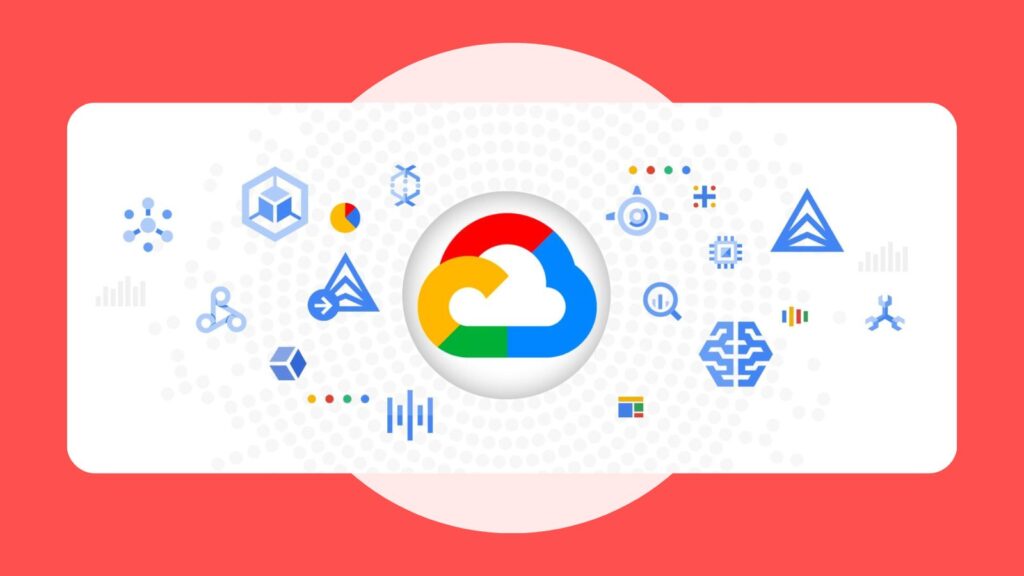Two weeks ago, Localyse hosted a knowledge-sharing event with Ruimteschepper at the Google offices in Amsterdam. Attendees from various industries had the chance to learn about different implementations of Google Earth Engine and Google Maps APIs. A full breakdown of the event can be found in this blog post.
How will Generative AI (GenAI) change the future of Google Cloud?
My presentation was about the use of Generative AI (GenAI) and how it is the future of internet searches. The Google I/O event demonstrated how AI will refine searches for places. They showed a part of the presentation where you can search for entry lesson rates for yoga studios within a certain distance from a given location, and Google returned a summary of everything the user asked for. You can watch the part of the presentation I’m referring to here. All of this follows the earlier release of the Gemini AI API, which allows users to implement multimodal AI functionalities in their applications. We already discussed a few possible implementations in a previous blog post.
I proceeded to build a few examples using the AI API. I wondered how Google Maps and AI could work together. The data in Google Maps is so rich and varied that it would be nice to simply ask a question instead of trying to find the right parameters to narrow down a search for a place. So I used my journey home as an example of possible searches using AI.
For the first example I used the Nearby Search API. Because after my presentation, I needed to go home using public transport and I wanted to know what options were available within a certain distance from the Google offices. So, I asked, and the AI/Nearby Search combination delivered, as you can see in the following video.
I decided to take the train from the ‘Amsterdam-Zuid’ station. But first, I wanted to eat a vegetarian meal and visit the ‘Albert Heijn’ supermarket. Thanks to the AI/Text-Search/Routes combination, I got a route that met all my requirements. However, I decided I wanted to reach my goal of 10,000 steps a day. So, I wanted to walk to Amsterdam Centraal, pass by a restaurant with more than 4 stars, and still go to an ‘Albert Heijn’. And I got another route that fit my requirements. But it seemed that this walk would take me more than an hour, so in the end, I took the train from ‘Amsterdam-Zuid’. 😉
On the way home, I wondered where I wanted to go on vacation. Maybe AI could also help with this. What about a pet-friendly camping site in Spain with a pool and access to a beach? This search resulted in multiple campings in Spain that meet the requirements.
All these examples highlight the importance of up-to-date data in Google Maps. If the data for these places wasn’t as detailed as it is, they wouldn’t have appeared in any of these examples. Businesses can ensure they are easily found by enriching their place data.
This wasn’t the only topic I covered in my presentation. AI has many more applications beyond narrowing down text searches. You can use AI to restructure data, create chatbots, translate text, or rewrite content.
Another fascinating feature is the ability to extract information from a text. For instance, I wanted to input a news article and have the content ‘mapped out’ with context. This way, I could visualize what happened at each location without having to search for places myself. The AI reads the article and extracts the locations, then we use Google Maps APIs to visualize them.
The input was an article about more accessible tourist attractions in Antwerp. I created a short video to demonstrate what this looks like.
Will Gemini AI transform the way we work?
In conclusion, the integration of Generative AI and Google Maps APIs, demonstrated by the Gemini AI API, marks a significant leap in digital information interaction.
My presentation showed how AI can streamline searches, such as finding nearby places or planning complex journeys. These examples underscore the rich data in Google Maps and its potential when combined with AI to provide precise answers. Extracting and visualizing information from text, further illustrates AI’s capabilities.
Maintaining detailed, up-to-date data in Google Maps is crucial for businesses to enhance their visibility. AI’s applications go beyond search refinement, offering solutions like data restructuring, chatbot creation, text translation, and content rewriting. The continued evolution of AI technologies like the Gemini AI API will shape the future of digital interactions, delivering innovative solutions and improved user experiences.


